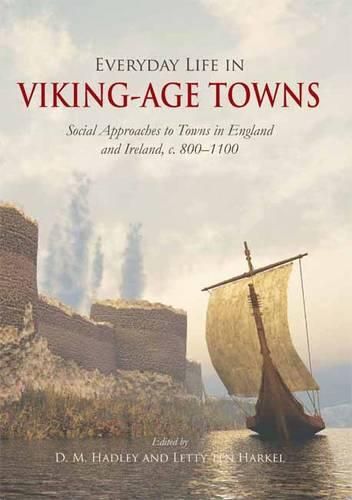Readings Newsletter
Become a Readings Member to make your shopping experience even easier.
Sign in or sign up for free!
You’re not far away from qualifying for FREE standard shipping within Australia
You’ve qualified for FREE standard shipping within Australia
The cart is loading…






The study of early medieval towns has frequently concentrated on urban beginnings, the search for broadly applicable definitions of urban characteristics and the chronological development of towns. Far less attention has been paid to the experience of living in towns.
The thirteen chapters in this book bring together the current state of knowledge about Viking-Age towns (c. 800-1100) from both sides of the Irish Sea, focusing on everyday life in and around these emerging settlements. What was it really like to grow up, live, and die in these towns? What did people eat, what did they wear, and how did they make a living for themselves? Although historical sources are addressed, the emphasis of the volume is overwhelmingly archaeological, paying homage to the wealth of new material that has become available since the advent of urban archaeology in the 1960s.
$9.00 standard shipping within Australia
FREE standard shipping within Australia for orders over $100.00
Express & International shipping calculated at checkout
The study of early medieval towns has frequently concentrated on urban beginnings, the search for broadly applicable definitions of urban characteristics and the chronological development of towns. Far less attention has been paid to the experience of living in towns.
The thirteen chapters in this book bring together the current state of knowledge about Viking-Age towns (c. 800-1100) from both sides of the Irish Sea, focusing on everyday life in and around these emerging settlements. What was it really like to grow up, live, and die in these towns? What did people eat, what did they wear, and how did they make a living for themselves? Although historical sources are addressed, the emphasis of the volume is overwhelmingly archaeological, paying homage to the wealth of new material that has become available since the advent of urban archaeology in the 1960s.